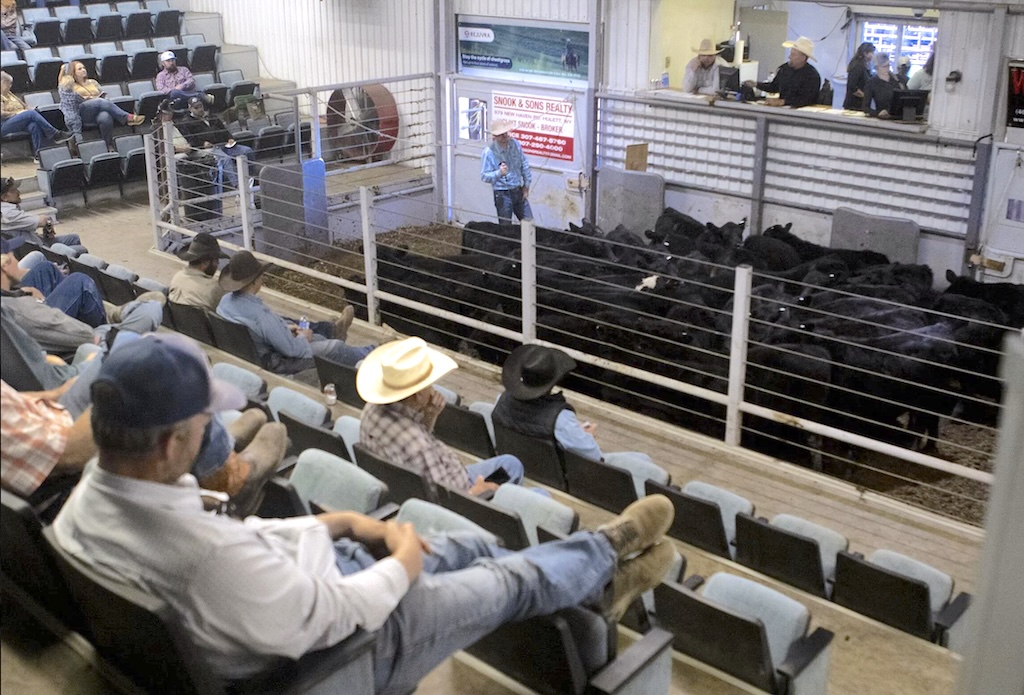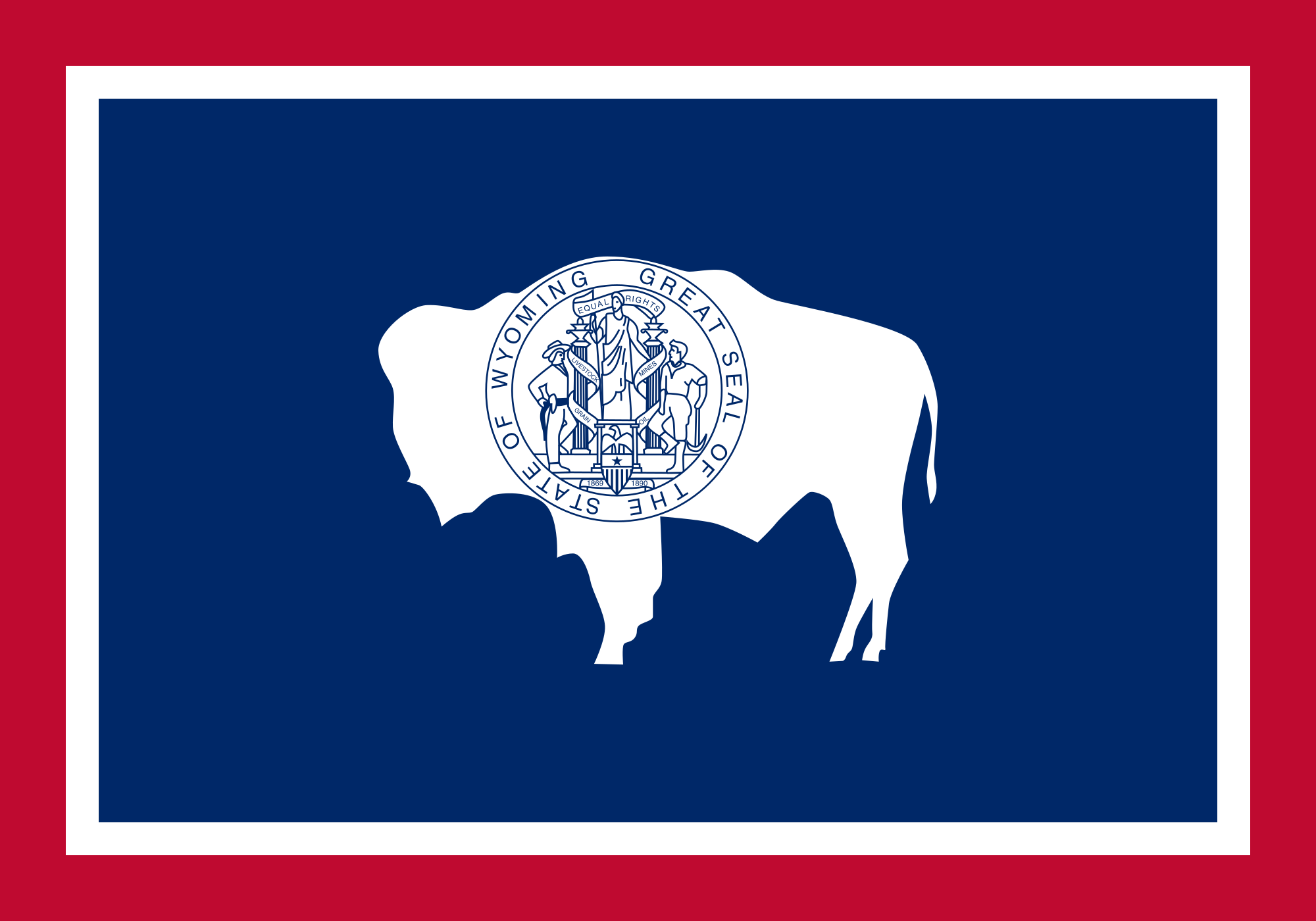Cattle prices have reached a record high this year
By Wyoming News Exchange
September 29, 2025

Cattle in the viewing pen at the Buffalo Livestock Market on Wednesday. Photo by Susan Monaghan, Gillette News Record.
• Campbell County ranchers say it’s a welcome relief
By Susan Monaghan
Gillette News Record
Via- Wyoming News Exchange
GILLETTE — Wednesday afternoon inside Buffalo Livestock Market — one of the local sale barns to ranchers in Campbell County — ranchers were experiencing something they’d never even dared to hope for: a windfall.
With drought in recent years shrinking cattle herds in the U.S., demand for beef is far more significant than the current supply. For the past few years, the price buyers are willing to pay for cattle has been steadily growing.
This year, the prices are stratospheric.
While beef steak prices have jumped about 12% since last year, according to the Bureau of Labor Statistics, the price of cattle may have jumped more than three times that.
Buffalo Livestock Market co-owner Craig Deveraux said he’d peg that increase over last year at about 40%.
“In any commodity, that’s a jump, 40%,” Deveraux said. “…The further you go back, the bigger increase it’s going to be.”
Deveraux said that there’s two major factors making American cattle drastically more expensive, in addition to the supply squeeze: the restriction on Mexican cattle coming in the U.S. to control for the spread of New World Screwworm infections that’ve hit Mexican herds hard in recent months and Trump’s tariffs on Brazilian beef.
While ranchers can sell cattle year-round through sale barns, many ranchers sell their calves in the fall. And while some ranchers hold a portion of their calves to sell later in the year, for many, the yearly calf sale is by far the biggest check they’ll receive all year.
As calves and cattle were ushered in and out of the viewing pen throughout the day Wednesday below the auctioneer’s window, winning bids were coming in at prices higher than ever before seen.
It would be easy not to notice something once in a lifetime was happening, looking at the rows of ranchers scattered in the viewing bleachers, either bidding or watching their herds move through the pen.
Bids for extraordinary amounts were indicated with a small hat tip. As bids were finalized, with the latest indicated on a panel above the auctioneers’ window showing the average weight and sale price per head, some ranchers smiled, but as far as celebrations go, that was the extent of it.
A vast share of the nation’s ranchers are hoping to break even. To get rich off cattle sales was simply never a reasonable expectation. This year won’t change that — but seeing the returns better match a years’ worth of work isn’t something they’re taking for granted.
A humbling year
Calves moving through the Buffalo Livestock Market were going for about $2,500 a head Wednesday. Just a few years ago, the idea of netting even $1,000 per calf was basically a pipe dream.
Courtney Tennant, who works on her grandmother Sheryl Edwards’ ranch south of Gillette, sat with Edwards in the stands Wednesday as their cattle sold. She said she’d seen sales of up to half a million dollars come through that day — and that watching their own cattle sales come through was a humbling experience.
“I’m kind of a hired man on the ranch,” Tennant said. “…It’s weird to see how much the animals that you work sell for what they’re worth.”
Tennant said the past few years have been tumultuous for ranchers, and this years’ boon has incentivized many to either cash out of the industry and retire or sell everything and start from scratch.
“It’s wild, how … different even from last year the market is,” Tennant said, adding that through the worst of COVID-19, “everybody was trying to keep what they have, because you never know what’s going to happen. And now everybody wants to sell everything they have to try to make money out of what’s going on.”
Edwards ranched in Campbell County with her husband, Teddy, for more than 50 years. Tennant said that while her parents were looking to expand their herd, her grandmother was looking to sell off cattle in the wake of Teddy’s passing this summer.
Edwards said that she’d never experienced a sale like this year’s in her lifetime.
Yet Wyoming agriculture is never one thing — if cattle’s having a heyday, the returns on sheep herding have gone downhill in recent years. Edwards said Teddy’s sheep were extremely important to him, and they’ll try to hang onto their herd for as long as possible.
“The problem with it is synthetics have killed the wool industry, so there’s really no demand,” she said. “We’ve had several years where we’ve not been able to sell our wool …. We’re losing a lot of good sheep producers.”
If there’s still variability in the industry this year, the returns on cattle sales will at least give ranchers some reprieve on repairs and other needs: Edwards said they’ll be using this year’s extra funds to pay for needed infrastructure improvements.
“We have a lot of fencing that needs done, and that’s expensive,” she said. “We’re also trying to drill some more water wells … So it’ll probably all go back into the ranch.”
No rancher in Campbell County is counting on conditions to remain the same — and yet, according to Deveraux, signs of a cool-down are basically nonexistent.
Waiting for the other shoe
Deveraux confirmed that sales coming through Buffalo Livestock Market are breaking records.
“They’re setting records every day … it’s, I think, been a pretty welcome relief to a lot of ranchers,” he said. “With the prices of all the inputs going up … the labor, price of equipment, the pickups, and the prices of horses even, it’s a pretty welcome relief that the cattle market has finally stepped up and kept up with inflation.”
He also said that while the cattle industry has experienced boom periods before, they’ve typically been short lived. This time, prices have only increased over their own high water-mark.
He added that though cattle numbers are down domestically, they’re also going up in weight, which has made up for some of the lost beef pounds.
“A finished beef would have weighed probably more in the 13-14 range, and now they’re pushing them up to 16,” Deveraux said. “When you multiply that extra weight across the entire domestic production, it’s an incredible tonnage of extra beef.”
The signs, as well as they can be read in advance, point to fairly restricted beef production for a while longer: Deveraux said the number of cattle placed for beef production in the month of August nationwide reduced by about 10% compared to last year.
“So there’s no smoking gun you can point to that says this thing probably is going to drop,” he said. “But being so close to the industry as long as I have, the other shoe has always dropped.”
It’d take a “black swan” event to take prices down, he said, such as feedlot closure, or a catastrophic disease hitting herds.
Those extraordinary circumstances have put the Trump administration in a bit of a double bind: amid complaints about the price of beef and other goods at the grocery store, Trump told reporters earlier this month that the price of beef would go down “once our policies kick in.”
The above story may be used ONLY by members of the Wyoming News Exchange or with the express consent of the newspaper of its origin.
But with Brazilian tariffs holding, ranchers may be able to count on another year or two more of once-in-a-lifetime returns.

